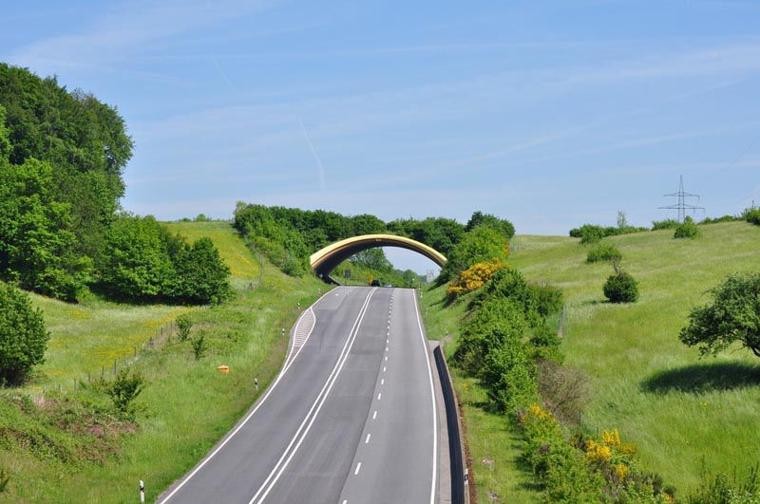The Fremont County Commission in East Idaho is set to finalize wording on a planned advisory vote on the subject of wildlife overpasses.
Advisory votes don’t have any binding effect on the commissioners or anyone else.
The Idaho Transportation Department is currently reviewing a set of possible alternatives for improvements to the section of U.S Highway 20 near the Montana border.
Four of the five alternatives include an extra climbing lane, wider shoulders, turn lanes, road-base reconstruction, a host of ordinary road improvements and vegetation clearing. They range in price from $15 million to $30 million, depending on how much would be spent on efforts to reduce wildlife collisions and increase the connectivity of wildlife populations on both sides of the highway.
The most expensive option would include wildlife fencing across the entire section of road and construction of three wildlife overpasses. The option involving construction of a single overpass would cost between $20 million and $24 million. Simply resurfacing the road, without any road or wildlife improvements, would cost about $3 million.
Much of the cost of the project would be covered by federal highway funds.
The issue has become a bone of contention for some in the area. Proponents say the costs are justified by the reduced risk of accidents involving wildlife and better connectivity between populations of animals divided by the road. Ken Watts and Leanne Yancey, who have spearheaded opposition to wildlife overpasses, didn’t respond to recent requests for comment.
The Fremont County Commission decided earlier this month to put an advisory question about the matter on the ballot, and directed an attorney to come up with wording for a proposed question. The attorney’s wording has been posted on the commission’s website.
“There’s a deep divide in the county about whether we should have those or not, and this is to advise the county commission about how the voters feel about it,” Commissioner Bill Baxter said.
Proponents of the overpasses said they’re happy with the wording of the measure, especially because it will allow voters multiple options for response. In its current form, the measure allows voters to say that they support overpasses, that they oppose them, that it depends on the nature of the overpasses and where they’re located, or that they don’t know.
“I’m very pleased with the language that was presented to the commissioners and ... for the November ballot,” local resident Sheryl Hill said. “It provides at least four options, which is important for voters.”
“I think they were fair in the way they came up with the language,” resident Jean Bjerke said.
But they said they’re also concerned that seasonal residents, who make up a fair proportion of the county and its tax base, won’t have their voices heard in a vote.
“I think there are a number of people in Island Park and Fremont County who are really behind this,” said Kim Trotter, program director of Yellowstone to Yukon, an organization that promotes wildlife connectivity. “I think it will be a good gauge of what is happening in Island Park and Fremont County. My fear is there are a lot of people who pay taxes whose voices won’t be heard in this vote.”
Trotter said she’s also concerned that opposition to the current proposed locations for overpasses could translate, through the advisory vote, into general opposition to the idea.
“It seems premature to make a decision like this when we don’t know what the alternatives are, based on a single project,” she said.
Trotter said the science is clear: Overpasses provide the best opportunity to connect divided populations of wildlife and are the best alternative for avoiding collisions with motorists.
ITD, on its website about the project, indicates that it plans to make a decision on the Targhee Pass project this summer, well before the advisory vote will take place.



